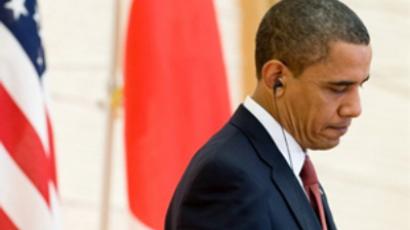Russia-US ties: roller-coaster ride through decades
The much-anticipated visit to Moscow by President Obama is not the first time there’s been hope for a fresh start between Russia and the US.
It’s been a relationship with plenty of twists and turns, from the Cold War and arms race, to occasional bursts of warmth and friendship.
From lowest points to the peak
As for the lowest points, the Cuban Missile Crisis in 1962 put the world on the verge of a nuclear war. The American invasion of Vietnam strained relations when the Soviet Union backed the North Vietnamese. And the invasion of Afghanistan by Soviet forces in 1979 led to a new round of the arms race, driven by the US.
However, mutual interests often seemed to prevail despite difficulties.
In 1972, Soviet-American cordiality reached a peak with the first visit of an American president to Moscow: Richard Nixon met Soviet leader Leonid Brezhnev. The two sides launched SALT-1 – or Strategic Arms Limitation Talks – bringing about several agreements that heralded the start of détente.
Viktor Sukhodrev is a unique witness to that history. He was personal interpreter to Nikita Khrushchev and Leonid Brezhnev. Later he worked with other Soviet leaders, but he says never again did he see such an understanding between two politicians as between Nixon and Brezhnev, proving that personal chemistry often reflects how the two countries get on.
“I observed that personal rapport develop from the very first day. There was an ability for them to spend a lot of time together and talk about everything under the sun, not just have formal discussions”.
“Perestroika” as a way out
Another wave of personal chemistry came to Soviet history with a hero of new times – Mikhail Gorbachev who became extremely popular in the West. His “perestroika” and “glasnost” initiatives allowed to find a way out of another prolonged confrontation. A new époque of disarmament took off.
“Of course there was a certain mutual dissatisfaction sometimes, but all-in-all our policy back then was aimed at improving relations with the West, and in particular with the US,” recalls Eduard Shevardnadze, USSR Minister of Foreign Affairs (1985-1991).
With the break-up of the Soviet Union and the Warsaw Pact at the end of 1991, NATO started its unimpeded expansion eastwards.
The fall of USSR: the world changes
Nevertheless, Russia and the US, at least on paper, became “strategic partners”. Friend Boris and friend Bill got on very well. However, many believe that Russia was sacrificing its strategic interests in favor of good relations with the US.
“One way of looking at the end of the Cold War is while Russia interpreted it as either a deal or, at best, as a surrender on terms,” said Anatol Lieven, professor of King’s College in London.
“The Americans saw it like 1945 – as unconditional surrender – and tried to make a sort of Versailles-style peace at Russia’s expense”.
The war in Yugoslavia finally put an end to this idyll. And as Vladimir Putin and George Bush took the helm at the Kremlin and the White House respectively, the world changed. And so did the US and Russia.
The tragedy of the September 11 attacks brought the offer of a helping hand from Moscow to America. Welcome as it was, it didn’t prevent the US from unilaterally withdrawing from the anti-ballistic missile treaty or from expanding its influence in the post-Soviet space.
With the start of Bush’s war in Iraq, relations sank lower than ever before.
“Ice Age” to end for Russia and US?
The inauguration of Barack Obama brought new hopes for a fresh start.
“First of all, there is the problem of NATO expansion,” noted Aleksey Pushkov, Director of the Institute of Contemporary International Problems.
“Second, there is the issue of ABM systems in Europe, and third, the disagreements on Georgia, Abkhazia and South Ossetia – and those are highly-sensitive issues which can come and spoil whatever new hopes that have appeared in the bilateral relations”.
This point of view is shared across the Atlantic.
“By ‘reset’ we mean that we will start with a clean page; that we will completely forget what happened before – this is not going to work,” believes Dmitry Simes, President of the Nixon Center.
“What can work is a new beginning: we remember the past, but our future is not going to be shaped by the past”.
The turbulent relationship between Moscow and Washington has always featured dramatic breakthroughs and historic changes in global security. After recent years, which reminded many of the Cold War times, Russia and the US have finally declared another warming. The main hope now is that Dmitry Medvedev and Barack Obama will turn warmer rhetoric into practical deeds.













